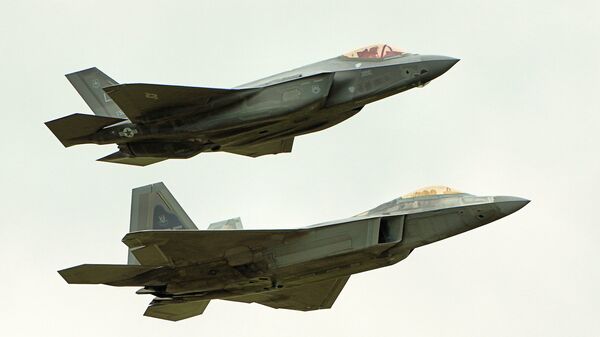Kelly told attendees at the Wednesday event that although both jets would not be meeting the standard, which requires 80% of them to be mission-capable, the multirole F-16 Fighting Falcon aircraft “should” be hitting that target rate soon.
“We learned a lot from the MC80 [mission-capable 80%] effort,” Kelly said. “One of the big things we learned is that our long-range readiness strategy, which takes a lot more consideration than MC80, is frankly a more viable strategy.”
“MC80 is actually a very important metric of how ready we are to go to war, but there is an easy way for the Air Force to achieve MC80 on any airframe, and that’s to just stop flying - we actually flew more,” he added.
According to Defense News, the F-22 jet’s need for careful maintenance on its low-observable coating is the reason behind the aircraft’s inability to reach mission-capable standards. For the F-35A, issues were rooted in the service’s continued use of the fifth generation jet for unspecified operations.
“So facts matter,” Kelly said at the event. “The facts are: We won’t make it, but the data behind the facts is we’re actually having pretty good success.”
The new call for the US military to improve its mission-capability rates to at least 80% readiness came about in a September 2018 memo issued by Mattis. In the order, the then-defense secretary noted that “budget constraints and shortfalls in aviation squadrons across the force” ultimately led to “systemic performance, overcapitalization and unrealized capacity” in fighter aircraft.
However, despite the setbacks, Mattis stressed that the military branches needed to improve capability rates for F-35, F-22, F-16 and F-18 inventories. Additionally, Mattis called on service officials to reduce operating and maintenance costs across the board by the beginning of Fiscal Year 2019.
It’s presently unclear if the McDonnell Douglas F/A-18 Hornet fleet will also meet the new mission-capable rates; however, USNI News did report in April 2019 that the fleet had managed to routinely reach a rate between 63% and 75%.



